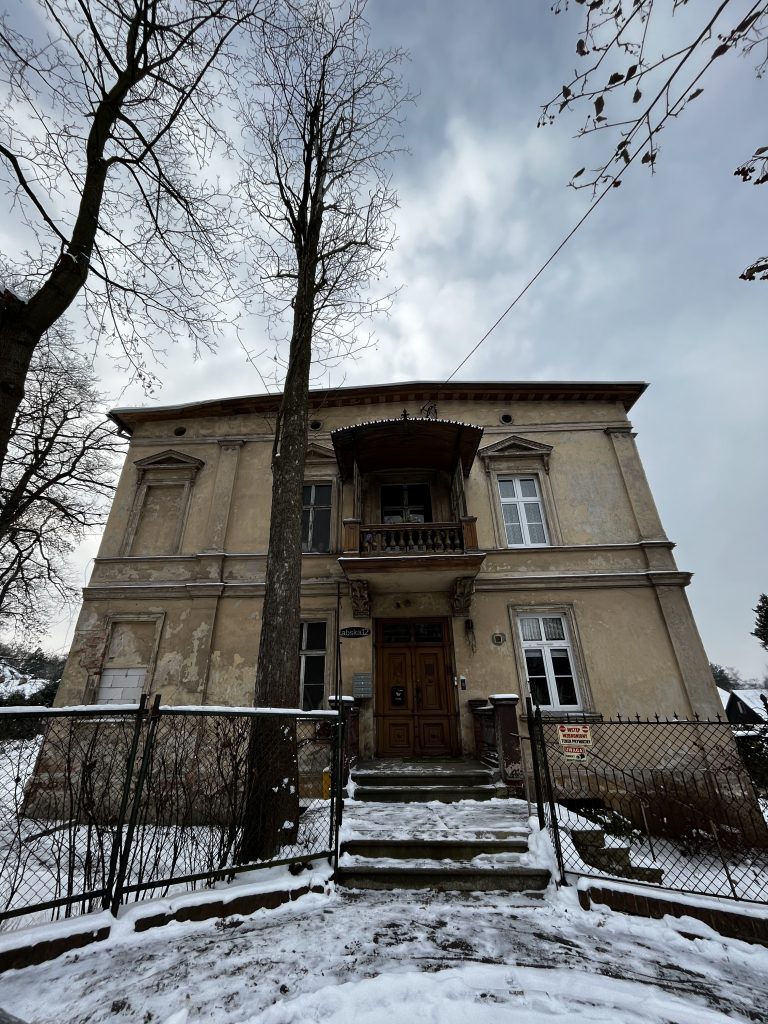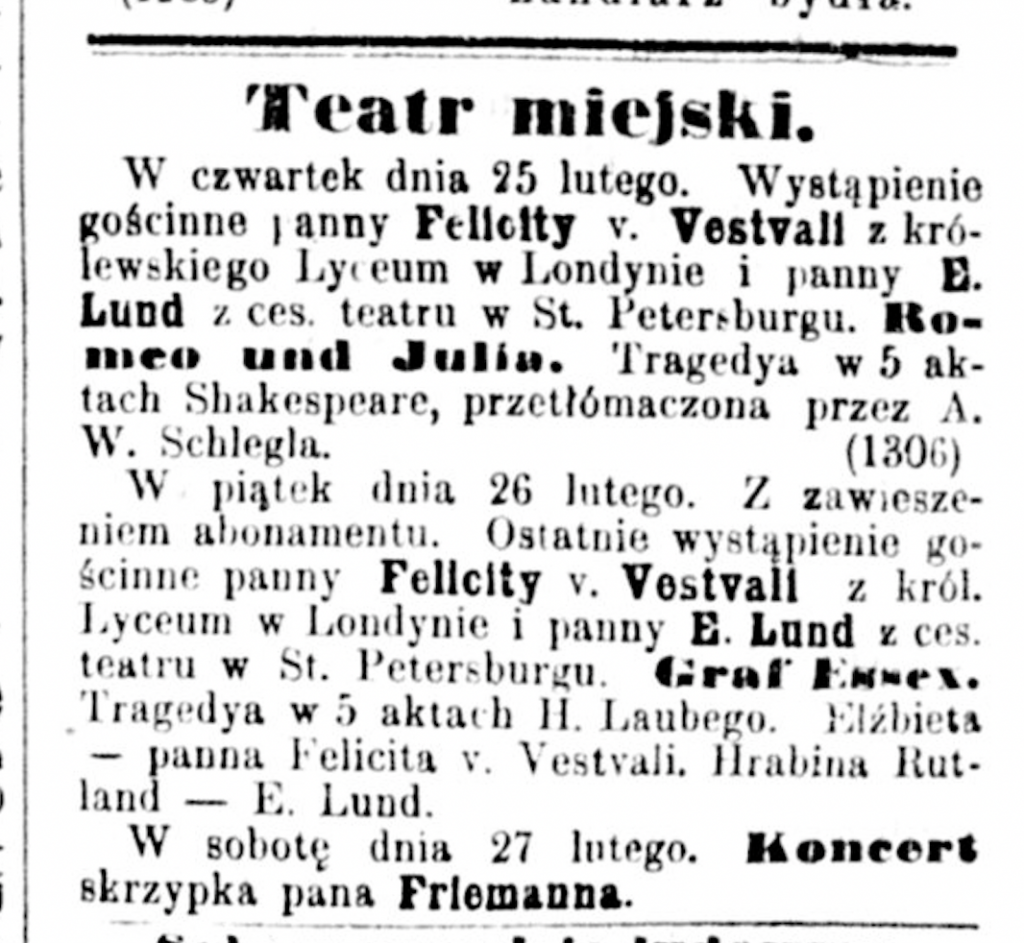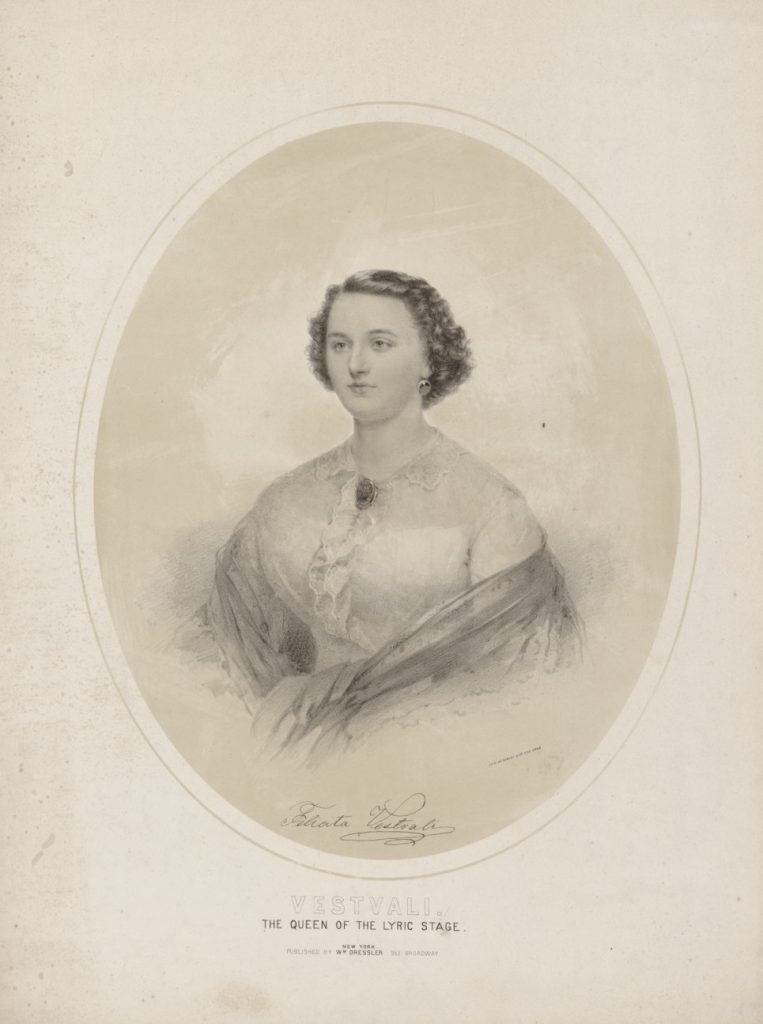As I strolled down Łabska Street in Jelenia Góra (Hirschberg) for the first time, the house at number 12 immediately grabbed my attention. With its elegant driveway and richly adorned façade reminiscent of ancient temples, I recall my initial thought during that stroll: “Someone exceptional must have lived here.” And indeed, that proved to be true. Let me introduce you to the history of Villa Vestvali.


The house at ul. Łabska 12 in Jelenia Góra, formerly Villa Vestvali, later Villa Birken / Photo: Marta Maćkowiak

Information about Elise on the pre-war map of Cieplice

Portrait of Elise Lund – AbeBooks antique shop
Felicita von Vestvali, according to various sources, was born either in Szczecin, Warsaw, or Krakow, in 1828 or 1831. Some claim she was German, while others say she was Polish. According to some, her name was Anne Marie Stagemann, while others refer to her as Felicja Westfalowicz. She was said to be the daughter of a high-ranking official, a noblewoman, or a fugitive from Polish lands.
And as the famous saying goes, there’s a grain of truth in every gossip. Piotr Szarota, a descendant of Felicity’s sister, Emma Spitzbarth (née Stagemann), who is working on a book about Vestvali’s life, has managed to establish a few facts.
Felicita was born in Szczecin (then German Stettin) in 1828 or 1829 as Maria Stagemann. Her parents were Prussian Army Lieutenant Georg Stagemann and Charlotte von Hünefeld.
The Stagemann family was related to the Polish Westwalewicz family, as Felicity’s half-brother was Henryk Westwalewicz, who later became her manager in the United States and adopted the nickname Henry Vestvali.
At the age of 15, Felicita, against her parents’ wishes, ran away from home disguised as a boy to join Wilhelm Bröckelmann’s theater troupe in Leipzig. Shortly thereafter, she was discovered by the actress Wilhelmine Schröder-Devrient, who became her mentor.


Information about the performance of Elise Lund and Felicity Vestvali as Romeo and Juliet in Poznań. Dziennik Poznański, February 26, 1869.

Felicita Vestvali / source: Bibliothèque nationale de France
Felicita made a striking impression on everyone, as Anna Dżabagina wrote, quoting Lilian Eriksson: “many beautiful women sought Vestvali’s favor, and many husbands had reason to envy the beautiful and charming Romeo.”
She was the first woman to play Hamlet, earning rave reviews, and she was a favorite of, among others, Abraham Lincoln and Napoleon III, from whom she received a silver suit of armor as a gift.



Dziennik Poznański, February 26, 1869 – Felicita Vestvali

Joint performance of Felicity and Elise as Romeo and Juliet
After the end of the Franco-Prussian War in 1871, Felicita performed less frequently and decided to focus on her private life. She found her place in Bad Warmbrunn, today’s Cieplice Śląskie-Zdrój (a district of Jelenia Góra), where she bought a plot of land and commissioned the construction of a villa. Moreover, Felicita engaged in real estate speculation and created an entire neighborhood called Russische Kolonie (Russian Colony) in the present-day vicinity of Łabska and Krośnieńska streets. According to one theory, the name originated from the popularity among Russian spa guests. According to the Historical Maps Atlas, the first villa in the Russian colony belonged to Mrs. von Spitzbarth, the wife of a financial counselor, who was said to be of Russian origin.
It is highly likely that it pertained to Emma Spitzbarth nee Stegemann, the sister of Felicity, who also owned land there. Emma lived in Warsaw, where she is buried in the Evangelical-Augsburg Cemetery. She was the mother of Warsaw architect Arthur Otto Spitzbarth and the grandmother of the writer Eleonora Kalkowska.

The Spitzbarth family tomb at the Evangelical Augsburg Cemetery in Warsaw / Source: Grobonet.com

Snippet about Elise not being able to be Felicity’s adopted daughter because she was older / Columbus Morning Journal, January 23, 1866
Felicita Vestvali passed away on April 3, 1880, either during a visit to her sister in Warsaw or already in Bad Warmbrunn (Cieplice). Towards the end of her life, she was associated with another woman (referred to as G. in letters), but it was Elise Lund who inherited her villa on Łabska Street and the majority of her estate. Elise was also supposed to fulfill her final wish and bring Felicity’s body to Cieplice for burial.
And what if she became the patron of a special place in Cieplice? What would you suggest?
Sources:
Impressum:
Design: lukaszhajduk.com
Code: tomhajduk.com
Photo: @kasia_kaleta
Polityka prywatności
Regulamin sklepu
All rights reserved ® Marta Maćkowiak 2025